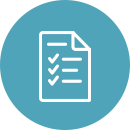
Webinars
-
Contains 4 Component(s), Includes Credits
Transforming Patient Care: Digital Change and Wearables in Sleep Medicine (A32026)
Webinar Executive Summary
Title: Digital Transformation and Wearables in Sleep Medicine: Shaping the Future of Patient Care
Presented by: Dr. Carlos Nunez, Chief Medical Officer, ResMed
---
Why Attend?
Sleep medicine is evolving rapidly with digital health and wearable technologies. This webinar will explore how these innovations empower clinicians and sleep technologists to deliver better outcomes, improve patient engagement, and align with AASM standards.
---
Key Objectives
1. Advance Digital Integration for Sleep Diagnostics
o Learn how connected devices and AI-driven platforms enhance diagnostic accuracy and therapy adherence.
o Understand ResMed’s role in integrating consumer wearables into clinical workflows.
2. Empower Sleep Technologists Through Data Literacy
o Gain strategies for interpreting wearable data and integrating insights into patient care.
o Address compliance and standardization challenges highlighted by AASM.
3. Prepare for Emerging Therapeutic and Monitoring Innovations
o Explore AI-powered wearables, predictive analytics, and hybrid care models.
o Understand implications for personalized therapy and future clinical practice.
---
Who Should Attend?
· Sleep technologists
· Clinicians and healthcare professionals in sleep medicine
· Digital health innovators

Dr. Carlos Nunez
Introduction for Dr. Carlos Nunez
Dr. Carlos M. Nunez serves as Chief Medical Officer at ResMed, a global leader in sleep and respiratory care solutions. He brings over two decades of experience bridging clinical practice and healthcare technology innovation.
· Medical Background: Dr. Nunez earned his M.D. from the University of Miami Leonard M. Miller School of Medicine and completed postgraduate training in anesthesiology, critical care medicine, and clinical research. Before entering the medtech industry, he practiced as an anesthesiologist, intensivist, and hospitalist, and directed critical care research and informatics at Carolinas Medical Center NorthEast.
· Prior to joining ResMed in 2017, Dr. Nunez held senior roles at Becton Dickinson, CareFusion, and Picis/Optum, where he led global teams in medical affairs, informatics, and technology strategy. At ResMed, he drives initiatives in connected care, AI, and data analytics, ensuring clinical rigor in digital health solutions. His work focuses on leveraging wearables, remote monitoring, and machine learning to improve diagnosis and therapy adherence for sleep-disordered breathing and chronic respiratory conditions.
· Dr. Nunez is a recognized voice in digital health, speaking at global forums like CES and HLTH, and hosting ResMed’s podcast Awaken Your Best, where he explores how technology and personalized care are transforming sleep medicine. His leadership aligns with the mission to deliver data-driven, patient-centric solutions that empower clinicians and improve outcomes worldwide.
-
Register
- Non-member - $30
- Member - Free!
- More Information
-
Register
-
Contains 4 Component(s), Includes Credits
Barriers in the Sleep Patient Journey: A Patient Perspective (A32014)
Key Talking Points:
Title of Talk: “Barriers in the Sleep Patient Journey: A Patient Perspective”
Speaker: Sarah Wahhab, RPSGT – Director of Clinical Outreach, Advanced Sleep Management
Summary: Sleep disorders affect millions of Americans, yet patients face long waits, confusing referral pathways, and inconsistent education. In this engaging session, Sarah Wahhab, a nationally recognized sleep medicine leader with over 20 years of experience, explores how to break down these barriers and transform the patient journey from delayed and fragmented to efficient and patient-centered.
Key Learning Points:
- Why sleep health is foundational to overall well-being and how delayed care worsens outcomes.
- The importance of educating both providers and patients about local sleep resources and referral pathways.
- How specialist shortages and fragmented systems extend wait times—and what can be done now to ease the bottleneck.
- How empowering providers to initiate testing can shorten time to treatment and improve adherence.
- Why a well-built sleep program with fast, clear communication dramatically increases patient follow-through.
- How DMEs can be partners rather than barriers by providing timely setups and meaningful patient education.
Takeaways for the Audience: Participants will leave with practical strategies to streamline referrals, strengthen collaboration between stakeholders, and improve patient outcomes—ultimately elevating the perception and impact of sleep medicine in their communities.
Ideal Audience: Healthcare providers, sleep technologists, program administrators, primary care teams, and anyone involved in patient referrals or care coordination within sleep medicine.
Sarah Wahhab, RPSGT
Director of Clinical Outreach, Advanced Sleep Management
Advanced Sleep Management / Baylor, Scott, & White - Sleep Services
Sarah Wahhab, RPSGT
Sarah Wahhab is a Registered Polysomnographic Technologist (RPSGT) with over 20 years of experience in sleep medicine. Since earning her credential in 2007, she has held leadership roles including Director of a DME company, Clinical Director, Chief Operating Officer, and now Director of Clinical Outreach at Advanced Sleep Management.
In her current role, Sarah oversees the Has Been Evaluated division and partners with practices to strengthen sleep programs across 10 Baylor Scott & White locations—ensuring patients have a direct pathway to care and physicians’ clinical goals are met. She has successfully led multiple facilities through AASM and Joint Commission accreditation and designed occupational health programs promoting safety and compliance in the driving community.
Passionate about education and best practices, Sarah works alongside more than 45 sleep specialists and some of the field’s founding leaders. Her mission is to elevate the profession, empower clinicians, and ensure patient care remains at the forefront of sleep medicine.
-
Register
- Non-member - $30
- Member - Free!
- More Information
-
Contains 4 Component(s), Includes Credits
COMISA-The Sleep Gap: How Women's Brains Rest Differently (A31983)
This session, featuring renowned speaker Jennifer L. Martin, PhD, promises to be enlightening and engaging!
Sleep is essential, but did you know that sleep disorders can significantly differ in how they affect women? Join us as we explore the intricacies of COMISA (comorbid insomnia and sleep apnea) and how it uniquely presents in women. Here’s what you can expect from this engaging, research-driven session:
- Discover the Differences in how women experience rest, with insights into neurological and physiological factors.
- Stay Up to Date with the latest evidence on COMISA and dual-treatment approaches that are reshaping women’s sleep health.
- Unpack Clinical Challenges and uncover the gaps in managing this complex sleep disorder.
- Empower Yourself with actionable strategies to enhance outcomes for female patients.
Whether you're an experienced sleep technologist or new to the field, this session is designed to deepen your understanding of women’s sleep health and equip you with actionable knowledge.
-
Register
- Non-member - $30
- Member - Free!
- More Information
-
Register
-
Contains 4 Component(s), Includes Credits Recorded On: 06/02/2025
Impact of GLP-1 Medications on Sleep (A31974)
Objectives for the presentation:
1. Understand the role of weight in OSA pathogenesis
2. Review mechanisms of GLP-1 medications for weight loss
3. Understand the latest data and recommendations on GLP-1 medications for OSA
4. Examine impacts of GLP-1 on current OSA therapies
-
Register
- Non-member - $30
- Member - Free!
- More Information
-
Register
-
Contains 4 Component(s), Includes Credits Recorded On: 05/05/2025
The Advantage of a HGNS Program (A31965) Hypoglossal nerve stimulator (HGNS) is a common treatment for obstructive sleep apnea.
- What kind of support do you need to run a successful HGNS (Inspire) program?
- Identifying patients that may benefit from this therapy
- Understanding of structured Care Pathway with Certification for clinicians
- Knowing there are next steps and we don’t stop until the patient and provider are satisfied with the results
-
Register
- Non-member - $30
- Member - Free!
- More Information
-
Contains 4 Component(s), Includes Credits Recorded On: 03/24/2025
- Understand the indication for bilevel, ASV and VAPs therapies - Learn about optimal therapy settings based on patient response - Recognized and address common issues with therapy *Hypoventilation *Hyperventilation *Mask Leak - Document observed signs, efforts to resolve issues and outcomes during titration study.
Objectives:
- Differentiate between PAP titration protocols for OSA, CSA, and NIV indicated conditions such as hypoventilation syndromes.
- Interpret polysomnographic data to guide the adjustment of advanced PAP modalities, including ASV, BiPAP-ST, and volume-assured pressure support.
- Formulate individualized titration strategies for patients with central sleep apnea and those requiring non-invasive ventilation, based on clinical presentation and comorbidities.
-
Register
- Non-member - $30
- Member - Free!
- More Information
-
Contains 3 Component(s), Includes Credits
Rhythm recognition round-up will review normal cardiac conduction, identify the relationships between EKG and normal cardiac conduction. Identify the relationships of the anatomy of the heart, how electricity travels through it and translates into the EKG we see. You will be able to identify what changes can happen based on differences from the normal relationships and rapidly analyze and interpret types of rhythms.
Rhythm recognition round-up will review normal cardiac conduction, identify the relationships between EKG and normal cardiac conduction. Identify the relationships of the anatomy of the heart, how electricity travels through it and translates into the EKG we see. You will be able to identify what changes can happen based on differences from the normal relationships and rapidly analyze and interpret types of rhythms.
Objectives:
§ Normal Cardiac Conduction Review
§ Lead Placement Review
§ Review EKG Waveform Components
§ Basic interpretation guides
§ Rhythm Interpretation and Analysis
-
Register
- Non-member - $30
- Member - Free!
- More Information
-
Register
-
Contains 4 Component(s), Includes Credits
This presentation discussed barriers to effective communication and techniques used to improve day to day patient interactions to influence outcomes. These topics expand to all patient areas, but it focuses on some sleep specific scenarios. This course is also available through the California Board of Registered Nursing, Provider License No. CEP17872 for 1 contact hour.
This presentation discussed barriers to effective communication and techniques used to improve day to day patient interactions to influence outcomes. These topics expand to all patient areas, but we will focus on some sleep specific scenarios.
Objectives:
- Recognize the impact of low health literacy on sleep health outcomes
- Describe methods of communication techniques to support patients' therapeutic journey and wellbeing
- Evaluate patient understanding of condition/treatment options
Speakers:
- Robyn Woidtke, MSN, RN, RPSGT, CCSH, FAAST
Continuing Education:
- 1 AAST CEC after passing a short knowledge assessment in the AAST Learning Center
- Provider approved by the California Board of Registered Nursing, Provider License No. CEP17872 for 1 contact hour.
-
Register
- Non-member - $30
- Member - $15
- More Information
-
Contains 5 Component(s), Includes Credits
Panel of Senior Sleep Technologists sharing their experiences and lessons that have helped build their successful careers in the sleep center, sleep industry and sleep education.
A panel of senior sleep technologists will be sharing their experiences and lessons learned that have helped build their successful careers in the sleep center, and sleep industry.
Objectives:
1. Provide insight on what skillsets helped prepare for their current roles
2. Understand different roles in the sleep field
3. Discuss training not just for new employees, but ongoing to promote educational growth and promote career opportunitiesSpeakers:
- Sarah Brennecka, BA, RPSGT, AAST Education Advisory Committee Chair
- Bryan Beaudette, RPSGT, CCSH
- Tessa Klucznyk, RST, RPSGT
- Andrea Ramberg, RPSGT, CCSH
Continuing Education:
1 AAST CEC after passing a short knowledge assessment in the AAST Learning Center-
Register
- Non-member - $30
- Member - $15
- More Information
-
Contains 4 Component(s), Includes Credits
This webinar will provide an overview of sleep health through the lens of behavioral sleep medicine - addressing the fundamental functions of sleep, sleep disorders, and treating insomnia and CPAP non-adherence using evidence-based methodologies.
This webinar will provide an overview of sleep health through the lens of behavioral sleep medicine - addressing the fundamental functions of sleep, sleep disorders, and treating insomnia and CPAP non-adherence using evidence-based methodologies.
Objectives:
1. Provide an overview of normal human sleep functioning
2. Identify and assess common sleep disorders
3. Fundamentals of behavioral interventions for insomnia and CPAP adherence.
Natalia S. David, PsyD, DBSM
Director of Training, DrLullaby.com
Continuing Education:
- 1 AAST CEC after passing a short knowledge assessment in the AAST Learning Center
Access:
- Free with AAST Membership
- $30 for Non-Members
-
Register
- Non-member - $30
- Member - Free!
- More Information
-
Contains 5 Component(s), Includes Credits Recorded On: 03/07/2023
Obstructive Sleep Apnea (OSA) in children effects of 2-3% of all children, however in light of the rising prevalence of childhood obesity, the estimated prevalence has increased to 6-10% of all children. While the first line of therapy for Pediatric OSA in children consists of upper airway surgery via surgical removal off the adenoids and tonsils, it has become increasingly clear that surgery efficacy is limited in older and//or obese children. As a result, alternative therapies, including positive airway pressure (PAP) therapy has become mainstay for a lot of children. The application of PAP devices in children is unique and requires further attention to ensure that PAP therapy is successful.
Obstructive Sleep Apnea (OSA) in children effects of 2-3% of all children, however in light of the rising prevalence of childhood obesity, the estimated prevalence has increased to 6-10% of all children. While the first line of therapy for Pediatric OSA in children consists of upper airway surgery via surgical removal off the adenoids and tonsils, it has become increasingly clear that surgery efficacy is limited in older and//or obese children. As a result, alternative therapies, including positive airway pressure (PAP) therapy has become mainstay for a lot of children. The application of PAP devices in children is unique and requires further attention to ensure that PAP therapy is successful.
Objectives:
- Provide an overview of Obstructive Sleep Apnea in children
- Distinguish indications for Positive Airway Pressure (PAP) therapy in children
- Discuss obstacles of PAP adherence in children
- Share real world data of PAP adherence in children
Rakesh Bhattacharjee, MD, FRCPC, DABP(SM), CBSM, DBSM, FAASM
Director of Sleep Medicine, Rady Children’s Hospital
Associate Clinical Professor of Pediatrics, UCSD
Continuing Education:
- 1 AAST CEC after passing a short knowledge assessment in the AAST Learning Center
Access:
- Free with AAST Membership
- $30 for Non-Members
-
Register
- Non-member - $30
- Member - $15
- More Information
-
Contains 3 Component(s), Includes Credits
This webinar discusses alternative therapies in patient diagnosis and treatment, the benefits of combination therapy, and follow up patient care plans.
This webinar discusses alternative therapies in patient diagnosis and treatment, the benefits of combination therapy, and follow up patient care plans.
Learning Objectives:
- Discuss how to impact patient outcomes
- Demonstrate improving outcomes with Combination Therapy
- Outline care plans for the CCSH
Speakers:
- Kevin M. Adley RPSGT, CCSH
Clinical Director
Midwest Dental Sleep Center - Andrea Ramberg, RPSGT, BA, CCSH
RPSGT Clinical Informaticist
EnsoData - Daniel D. Lane, MAPsy, BS, CCSH, RPSGT
PSG Program Coordinator
Orange Coast College
Recorded: 10/25/2021
CEC Credit(s): 1.0 CEC for AAST
Length: 1-hour
Category: AAST Webinar
Access Period: 30 days from date of access-
Register
- Non-member - $30
- Member - $15
- More Information
-
Contains 4 Component(s), Includes Credits
In this course, Dr. Khayat and Dr. Javaheri review the pathophysiology of central sleep apnea, with a focus on CSA in heart failure patients. They discuss the clinical outcomes of patients with CSA and review available therapeutic options for treating CSA. This content is provided by Respicardia.
This content is provided by Zoll/Respicardia.

Overview: In this course, Dr. Khayat and Dr. Javaheri review the pathophysiology of central sleep apnea, with a focus on CSA in heart failure patients. They discuss the clinical outcomes of patients with CSA and review available therapeutic options for treating CSA.
Presenters:
• Dr. Rami Khayat,
o Professor of Clinical Medicine and Psychiatry and Human Behavior
o Director, Pulmonary and Critical Care fellowship Program
o Medical Director, UCI Sleep Disorders Center
• Shahrokh Javaheri, MD
o Medical Director, Sleep Laboratory, Bethesda North Hospital, Cincinnati, Ohio
o Professor Emeritus, Pulmonary and Sleep Medicine, University of Cincinnati
o Adjunct Professor of Medicine, Division of Cardiology, The Ohio State UniversityObjectives:
• Review the pathophysiology of CSA, with a focus on CSA in heart failure patients
• Clarify clinical outcomes of patients with CSA
• Review available therapeutic options for treating CSACEC Credit(s): 1.0
Length: 1 hour and 9 minutes
-
Register
- Non-member - Free!
- Member - Free!
- More Information
-
Register
-
Contains 4 Component(s), Includes Credits
In this course, speakers will discuss how to classify hypopneas and asses the various treatment options for patients with predominately central sleep apnea/hypopnea syndrome. This content is provided by Respicardia.
This content is provided by Zoll/Respicardia.

Overview: In this course will discuss how to classify hypopneas and asses the various treatment options for patients wine predominately central sleep apnea/hypopnea syndrome.
Presenters:
Kara Dupuy-McCauley, MD, Senior Associate Consultant Pulmonary and Critical Care Medicine Sleep Medicine Mayo Clinic, Rochester, MN
Timothy Morgenthaler, MD, Vice Chair, Mayo Clinic Quality and Affordability Co-Director, Center for Sleep Medicine Pulmonary, Critical Care, and Sleep Medicine
Mayo Clinic, Rochester, MNObjectives:
Examine the latest evidence, methods, and clinical experience for classifying hypopneas
Assess the available treatment options for patients with predominantly central apneas and hypopneas
Review experience incorporating phrenic nerve stimulation into clinical practiceCEC Credit(s): 1.0
Length: 1 hour
-
Register
- Non-member - Free!
- Member - Free!
- More Information
-
Register
-
Contains 4 Component(s), Includes Credits
In this course, learners will hear how to understand the tools, approaches, and clinical evidence for diagnosing and treating sleep apnea in cardiac patients. This content is provided by Respicardia.
This content is provided by Zoll/Respicardia.

Overview: Understand the tools, approaches, and clinical evidence for diagnosing and treating sleep apnea in cardiac patients. This content is provided free of charge by Respicardia.
Presenters:
Kunal Agarwal, MD, FAAFP, FAASM, DipABOM
Medical Director, TidalHealth Sleep Medicine, Seaford & Mellsboro, Delaware
Objectives:Explore the evidence for sleep apnea screening in cardiology, with a focus on heart failure patients
Understand the mechanisms and clinical consequences of untreated central sleep apnea
Review the evidence for transvenous phrenic nerve stimulation (TPNS) to treat central sleep apneaCEC Credit(s): 1.0
Length: 45 minutes
-
Register
- Non-member - Free!
- Member - Free!
- More Information
-
Register
-
Contains 3 Component(s), Includes Credits
Prepare because you can’t predict! No one could have predicted the impact COVID-19 would have on sleep medicine. While we can’t change the events of this past year, we can prepare for the future. Sleep Technologists have a unique opportunity to optimize sleep wellness for our patients. Dr. Timothy Morgenthaler, Professor of Medicine, Mayo Clinic College of Medicine and Science Co-Director, discusses the evolving practice of sleep medicine and explores new opportunities for the sleep team. No one is as passionate about sleep health as a Sleep Technologist!
Prepare because you can’t predict! No one could have predicted the impact COVID-19 would have on sleep medicine. While we can’t change the events of this past year, we can prepare for the future. Sleep Technologists have a unique opportunity to optimize sleep wellness for our patients. Dr. Timothy Morgenthaler, Professor of Medicine, Mayo Clinic College of Medicine and Science Co-Director, discusses the evolving practice of sleep medicine and explores new opportunities for the sleep team. No one is as passionate about sleep health as a Sleep Technologist!
Learning Objectives:
- Discuss the changes in the practice of sleep medicine brought about by the COVID-19 pandemic in the USA
- Understand different roles for sleep medicine in evolving concepts of health and healthcare
- Summarize potential roles sleep medicine technologists might play in the future practice of sleep medicine
- Explain what skills might be needed to provide value in the sleep medicine of the future
Speakers:
- Timothy I. Morgenthaler, MD
Professor of Medicine, Mayo Clinic College of Medicine and Science
Recorded: 2/22/2021
CEC Credit(s): 1.0 CEC for AAST
Length: 1-hour
Category: AAST Webinar
Access Period: 30 days from date of access-
Register
- Non-member - $30
- Member - $15
- More Information
-
Contains 3 Component(s), Includes Credits
Discover evidence-based techniques to reduce insomnia in patients undergoing sleep testing or among those starting treatment of sleep apnea with positive airway pressure (PAP) therapy. Based on cognitive behavioral therapy for insomnia (CBTI), these simple interventions will reduce anxiety among patients and techs alike. Review breathing, progressive muscle relaxation, and guided imagery and employ these techniques in the sleep lab to help even the most challenging patients to sleep.
Discover evidence-based techniques to reduce insomnia in patients undergoing sleep testing or among those starting treatment of sleep apnea with positive airway pressure (PAP) therapy. Based on cognitive behavioral therapy for insomnia (CBTI), these simple interventions will reduce anxiety among patients and techs alike. Review breathing, progressive muscle relaxation, and guided imagery and employ these techniques in the sleep lab to help even the most challenging patients to sleep.
Learning Objectives:
- Learn how to help manage a patient's lab-based insomnia with simple interventions
- Optimize PAP therapy acclimatization with desensitization techniques
- Practice breathing, progressive muscle relaxation, and guided imagery to reduce anxiety
Speaker:
Brandon Peters, M.D.
Brandon Peters, M.D., is board-certified in both neurology and sleep medicine and currently practices at Virginia Mason Franciscan Health in Seattle. He has worked in sleep medicine since college with extensive clinical and research experiences in the field.Recorded: 4/26/2021
CEC Credit(s): 1.0 CEC for AAST
Length: 1-hour
Category: AAST Webinar
Access Period: 30 days from date of access-
Register
- Non-member - $30
- Member - $15
- More Information
-
Contains 3 Component(s), Includes Credits
This webinar demonstrates how you can drive PAP adherence programs by understanding the value of compliance data combined with your unique skill as a sleep technologist, and how to leverage it for better patient outcomes. This webinar discusses PAP therapy, compliance, coaching and collaboration within the sleep field.
This webinar demonstrates how you can drive PAP adherence programs by understanding the value of compliance data combined with your unique skill as a sleep technologist, and how to leverage it for better patient outcomes. This webinar discusses PAP therapy, compliance, coaching and collaboration within the sleep field.
Learning Objectives:
- Learn how to help manage a patient's lab-based insomnia with simple interventions
- Optimize PAP therapy acclimatization with desensitization techniques
- Practice breathing, progressive muscle relaxation, and guided imagery to reduce anxiety
Speakers:
- Byron Jamerson, RPSGT, RST, CCSH, FAAST
Sleep Health Educator, Product Specialist
Nox Medical - Amy Korn-Reavis, MBA, RRT, RPSGT, CCSH
Clinical Support Specialist at Advanced Sleep Management
Better Sleep Coach - Sarah Brennecka, BA, RPSGT
Manager, Sleep and DME
Northwestern Medicine
Recorded: 7/26/2021
CEC Credit(s): 1.0 CEC for AAST
Length: 1-hour
Category: AAST Webinar
Access Period: 30 days from date of access-
Register
- Non-member - $30
- Member - $15
- More Information
-
Contains 3 Component(s), Includes Credits
Dr. Patrick L. Fraley, MD describes the most recent advances in the diagnosis and treatment of sleep apnea and snoring. Covered topics will include home sleep testing, drug-induced sleep endoscopy, and neurostimulation for obstructive and central sleep apnea as well as snoring.
Dr. Patrick L. Fraley, MD describes the most recent advances in the diagnosis and treatment of sleep apnea and snoring. Covered topics will include home sleep testing, drug-induced sleep endoscopy, and neurostimulation for obstructive and central sleep apnea as well as snoring.
Learning Objectives:
- Discuss how to impact patient outcomes
- Demonstrate improving outcomes with Combination Therapy
- Outline care plans for the CCSH
Speaker:Patrick L. Fraley, MD
Associate Professor of Otolaryngology
University of Arkansas for Medical Sciences
Recorded: 6/27/2022CEC Credit(s): 1.0 CEC for AAST
Length: 1-hour
Category: AAST Webinar
Access Period: 30 days from date of access
-
Register
- Non-member - $30
- Member - $15
- More Information
-
Contains 3 Component(s), Includes Credits
Dr. Satish Puttaswamy Gowda, Pulmonology, Critical Care Medicine, Sleep Medicine, Algonquin, IL provides an overview of respiratory anatomy and physiology of a normal OSA patient including tidal volume, respiratory rate, minute volume. This presentation identifies and reviews the expected changes with disease progression of common respiratory disorders.
Dr. Satish Puttaswamy Gowda, Pulmonology, Critical Care Medicine, Sleep Medicine, Algonquin, IL provides an overview of respiratory anatomy and physiology of a normal OSA patient including tidal volume, respiratory rate, minute volume.
This presentation identifies and reviews the expected changes with disease progression of common respiratory disorders.
Learning Objectives:
- Understand the basics of respiratory anatomy and physiology of a normal OSA patient
- Describe titrating and supplemental oxygen use and how to evaluate saturations accordingly
- Identify the pathophysiology of common respiratory disorders
Speaker:
Dr. Satish Gowda, MD is a Pulmonologist in Algonquin, IL. Dr. Gowda has more experience with Sleep Apnea, Obstructive Lung Disease, and Pulmonary Vascular Conditions than other specialists in his area. He is affiliated with medical facilities such as Northwestern Medicine Huntley Hospital and Northwestern Medicine Mchenry Hospital.
Recorded: 3/15/2022CEC Credit(s): 1.0 CEC for AAST
Length: 1-hour
Category: AAST Webinar
Access Period: 30 days from date of access
-
Register
- Non-member - $30
- Member - $15
- More Information
-
Contains 4 Component(s), Includes Credits
In this course, Dr. Emani and Dr. Fudim discuss available therapeutic options for treating Central Sleep Apnea, with special focus on the recently published pooled cohort analysis for phrenic nerve stimulation therapy. This content is provided by Respicardia.
This content is provided by Zoll/Respicardia.

Overview: In this course, Dr. Emani and Dr. Fudim discuss available therapeutic options for treating Central Sleep Apnea, with special focus on the recently published pooled cohort analysis for phrenic nerve stimulation therapy.
Presenters:
• Dr. Sitaramesh Emani, Associate Professor of Medicine at the Ohio State University
• Dr. Marat Fudim, Assistant Professor of Medicine and Heart Failure Cardiologist at Duke UniversityObjectives:
• Discuss pooled cohort analysis from phrenic nerve stimulation Pilot and Pivotal Trials
• Review available therapeutic options for treating Central Sleep ApneaCEC Credit(s): 1.0
Length: 1 hour and 9 minutes
-
Register
- Non-member - Free!
- Member - Free!
- More Information
-
Register
-
Contains 3 Component(s), Includes Credits
This presentation provides an understanding of common disorders affecting respiratory care to identify a patient’s ventilatory deficits and needs to determine how to affectively meet their needs. Dr. Namen discussed transcutaneous / end tidal CO2, respiratory rate and tidal volume and describe treatment pathways and treatment alternatives.
Description:
This presentation provides an understanding of common disorders affecting respiratory care to identify a patient’s ventilatory deficits and needs to determine how to affectively meet their needs. Dr. Namen discussed transcutaneous / end tidal CO2, respiratory rate and tidal volume and describe treatment pathways and treatment alternatives.
Learning Objectives:
- Understand common disorders affecting respiratory care
- Identify patient ventilatory deficits and needs
- Describe treatment pathways and treatment alternative
Speaker:
- Dr. Andrew Namen
Pulmonologist
Wake Forest Baptist Health
Recorded: 4/11/2022
CEC Credit(s): 1.0 CEC for AAST
Length: 1-hour
Category: AAST Webinar
Access Period: 30 days from date of access-
Register
- Non-member - $30
- Member - $15
- More Information
| Access Date | Quiz Result | Score | Actions |
|---|







